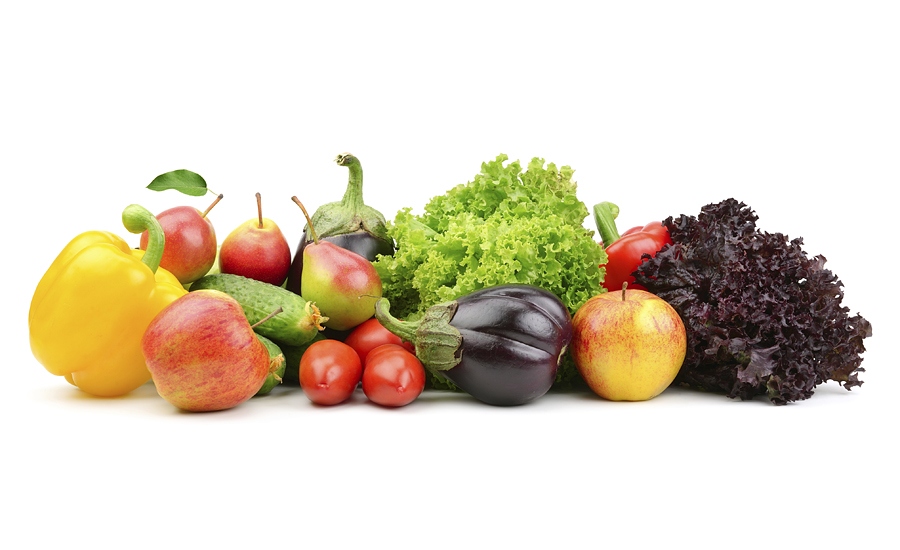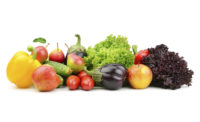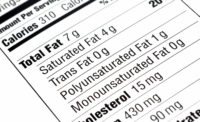Survey: Consumers still seek nutrition information, but many doubt food choices
The vast majority of consumers—eight in 10 (78%)—say that they encounter a lot of conflicting information about what to eat/avoid.

Americans are consuming food information from more sources than ever before, yet their nutritional literacy is sorely lacking, according to the 12th Annual "Food and Health Survey," released by the International Food Information Council Foundation (IFIC), Washington, D.C.
“As in previous years, the Food and Health Survey has shown that Americans feel overwhelmed by conflicting food and nutrition information,” says Joseph Clayton, chief executive officer. “But, this year, we’re finding troubling signs that the information glut is translating into faulty decisions about our diets and health. As policymakers work to revise the Nutrition Facts panel and define ‘healthy’ on food labels, it’s more crucial than ever before that we empower consumers with accurate information based on the best available science, in terms they can easily understand and put into action.”
Food confusion
The vast majority of consumers—eight in 10 (78%)—say that they encounter a lot of conflicting information about what to eat/avoid. More than half of those (56%) say the conflicting information makes them doubt the choices they make.
Almost all consumers (96%) seek out health benefits from what they eat and drink (the top benefits being weight loss, cardiovascular health, energy and digestive health), but out of those, only 45% could identify a single food or nutrient associated with those benefits.
For example, while sources of omega-3 fatty acids such as fish oil can contribute to heart health, just 12% made an association between them.
In addition, while people are interested in getting energy benefits, less than 5% could name caffeine as providing those benefits.
The “social network”
So, why are Americans confused? For one, despite their best intentions, the people they’re closest to might actually be leading them astray. In short, consumers paradoxically rely heavily on information from individuals—family and friends—for whom there is little trust.
About three-quarters of consumers (77%) say they rely on friends and family at least a little for both nutrition and food safety information, which tops other sources, including health professionals, news and the internet. But, only 29% actually have high trust in family or friends as information sources, far behind sources such as registered dietitian nutritionists, other health or fitness professionals and health-related websites.
Meanwhile, six in 10 consumers (59%) rated family and friends as the top influencer on decisions about their eating patterns or diets. Personal healthcare professionals were cited by 55% of consumers, while all other sources rated only in the single digits.
The health halo effect
The survey also suggests that consumers might be paying too much or making flawed decisions about nutrition because of non-health factors—or mental shortcuts— that drastically alter our perception of what is healthful.
These factors include the form of the food (fresh, frozen, canned), place of purchase (e.g., convenience store vs. natural food store), the length of the ingredient list and price, among others, and they drive perceptions of healthfulness even between two foods with identical nutrition information.
For example, even with nutritionally identical products, consumers are almost five times as likely to believe a fresh product is healthier than canned and four times as likely to believe a fresh product is healthier than frozen. Consumers also are more likely to believe a product that costs $2 is healthier than an otherwise identical product that costs 99 cents.
Boomers and older Americans—The health-driven generations
As people age, their nutrition needs and dietary preferences change. But, few have examined the shopping habits and eating patterns of Americans ages 50-plus—the country’s fastest-growing demographic.
That’s why the IFIC Foundation, in collaboration with AARP Foundation, Washington, D.C., conducted an oversample of respondents ages 50–80 to help uncover insights into the diets and health of older Americans.
Compared with other segments of the population, those age 50–80:
- are more confident in their choices. While 80% of all consumers say there’s a lot of conflicting information about what to eat and what to avoid, only 47% of those 50-80 say it makes them doubt the choices they make, compared to 61% of those ages 18-49.
- use fewer information sources when deciding which foods to eat or avoid. Consumers age 50-80 also are less likely than Millennials to use friends and family as a common information source (40% vs. 23%).
-
are more likely to adopt and maintain healthy eating behaviors. Among the most significant differences, Americans age 50-80 are more likely than those age 18-49 to be:
- Cutting back on foods higher in saturated fat more than younger Americans (75% vs. 57%)
- Cutting back on foods higher in salt (71% vs. 59%)
- Eating more foods with whole grains (70% vs. 62%)
- Consuming smaller portions (68% vs. 59%)
- Comparing sodium in various foods (63% vs. 52%)
- Cutting back on full-fat dairy or replacing it with low- or no-fat alternatives (60% vs. 50%)
- are more likely to be able to connect specific foods with the health benefits they seek. Of those who named a desired benefit, 49% of older Americans could associate it with a food or nutrient source, vs only 40% of younger Americans.
Meanwhile, Americans’ interest in getting weight-loss benefits from food and nutrients falls dramatically with age. Weight loss and management are far and away the most desired benefit, at 40% among those 18-34 and 38% from 35-49, but that drops to 23% from age 50-64 and 28% from 65-80.
The desire for foods and nutrients with cardiovascular benefits increases with age, from 11% ages 35-49 to 23% ages 50-64.
Confidence in the safety of the food supply increases significantly with age, with 55% from 18-49 saying they’re confident, 66% from 50-64 and 76% from 65-80.
Other survey highlights include:
- If Americans had an extra four hours per week, 46% would use that time to be physically active. That number is virtually tied with those who would spend more time with friends and family, while other priorities trail far behind.
- If Americans had an extra $100 per month, 25% say they would spend it on groceries—second only to “saving or investing” (57%) when given a list of priorities.
- Many Americans are overestimating their health status. While 59% say their health is very good or excellent, one-third of those people are either overweight or obese.
- About one in five (19%) of Americans say they occasionally read scientific studies for information about what to eat and what to avoid. That’s slightly more than news articles or headlines (17%) and also ahead of sources such as health or fitness professionals on TV or social media, bloggers, food companies and government agencies.
- Products’ brand names ranked last among factors that impact food and beverage purchasing decisions. From a list of six factors, 35% said that brand was a driver of their purchases, behind taste (84%), price (66%), healthfulness (63%), convenience (49%) and sustainability (38%).
- Consumers overwhelmingly shop for food at supermarkets (80%), followed by super-stores (45%), warehouse/discount clubs (35%), farmers’ markets (19%), natural foods stores (17%), convenience stores (14%) and drug stores (11%).
- About six in 10 (58%) of consumers use nutrition information at least sometimes to decide what to have when eating away from home.
- Topping the list of specific components considered to be healthful by consumers is vitamin D (88%), followed by fiber (87%), whole grains (84%), protein from plant sources (72%) and omega-3 fatty acids (71%).
- Six in 10 (61%) Americans are at least somewhat confident in the safety of the food supply, down from 66% in 2016 but unchanged from 2015 (61%).
Methodology
The results are derived from an online survey of 1,002 Americans ages 18-80, conducted March 10 to March 29. Results were weighted by age, education, gender, race/ethnicity and region. The survey was conducted by Greenwald & Associates, Washington, D.C., using ResearchNow’s consumer panel.
Looking for a reprint of this article?
From high-res PDFs to custom plaques, order your copy today!








